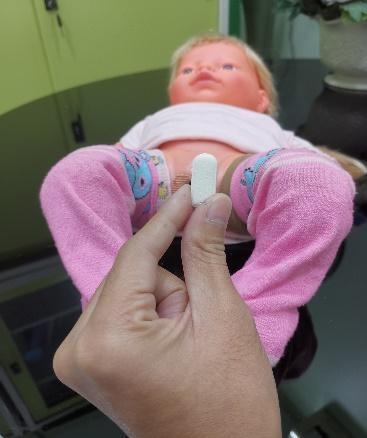Nursing Care for Women with Acute Vaginal Candidiasis
Main Article Content
Abstract
Vaginal Candidiasis (VC) is one of the most common causes that bring women to gynecologic clinics. It is not a sexually transmitted infection but appears to be a consequence of vaginal dysbiosis. As Candida albicans is the main etiologic organism, imidazole anti-fungal drug has widely been recommended as the treatment of choice. Due to its nature of frequent recurrence, lifestyle modification and reduction of risk factors also play an important role. Nurses are the key persons in the counseling process, including knowledge and risk factors assessment, health literacy promotion and lifestyle modification. Health literacy is delivered through documents via QR codes and simulation of intravaginal drug administration via in-house model. This article aims to review risk factors and nursing care in vaginal candidiasis.
Article Details
References
Chayachinda C, Thamkhantho M, Chalermchockcharoenkit A, Neungton C, Thipmontree W. Characteristics of Clients at The Siriraj Female STD Clinic During 2011-2015. Siriraj Medical Bulletin. 2018;11(3):182-9.
Sobel JD. Vulvovaginal Candidosis. Lancet. 2007;369(9577):1961-71.
Chayachinda C, Rekhawasin T, Thamkhantho M, Aneklap P. Acute Vaginal Candidiasis: A Review of Treatment Guidelines and Siriraj Experience. Thai J Obstet Gynaecol. 2021;29(6):306-12.
Ying S, Qing S, Chunyang L. The Effect of Gentian Violet on Virulent Properties of Candida Albicans. Mycopathologia. 2010;169(4):279-85.
Australian Sexual Health Alliance. Candidiasis. Australian STI Management Guidelines for Use in Primary Care [Internet]. 2018 [Cited 2021 March 12. Available from: http://www.sti.guidelines.org.au/Sexually-Transmissible-Infections/Infections-Associated-With-Sex/Candidiasis#Clinical-Presentation.
British Association for Sexual Health And HIV. British Association for Sexual Health and HIV National Guideline for The Management of Vulvovaginal Candidiasis (2019). 2019 [Cited 2020 July 28]. Available from: http://www.bashhguidelines.org/media/1223/vvc-2019.Pdf.
Sherrard J, Wilson J, Donders G, Mendling W, Jensen J. 2018 European (IUSTI/WHO) International Union Against Sexually Transmitted Infections (IUSTI) World Health Organization (WHO) Guideline on The Management of Vaginal Discharge. Int J STD AIDS. 2018;29(13):1258-72.
Workowski K, Bachman L, Chan P, Johnston C, Muzny C, Park I, Et Al. Sexually Transmitted Diseases Treatment Guidelines, 2021. MMWR Recomm Rep. 2021;70:1-187.
Geiger A, Foxman B. Risk Factors for Vulvovaginal Candidiasis: A Case-Control Study Among University Students. Epidemiology. 1995;7(2):183-7.
Na D, Weiping L, Enfeng Z, Chan W, Zhaozhao X, Honghui Z. Risk Factors for Candida Infection of The Genital Tract in The Tropics. Afr Health Sci. 2014;14(4):835-9.
Zeng X, Zhang Y, Zhang T, Xue Y, Xu H, An R. Risk Factors of Vulvovaginal Candidiasis Among Women of Reproductive Age in Xi’an: A Cross-Sectional Study. Biomed Res Int. 2018;2018: 9703754.
Yap Y, Camm A. Drug Induced QT Prolongation and Torsades De Pointes. Heart. 2003;89:1363-72.
Taylor D. Antipsychotics and QT Prolongation. Acta Psychiatr Scand. 2003;107:85-95.
Darpo B. Spectrum of Drugs Prolonging QT Interval and The Incidence of Torsades De Pointes. European Heart Journal Supplements. 2001;3(Suppl K):K70-K80.
Haddad P, Anderson I. Anti-Psychotic Related Qtc Prolongation, Torsades De Pointes and Sudden Death. Drugs. 2002;62:1649-71.






